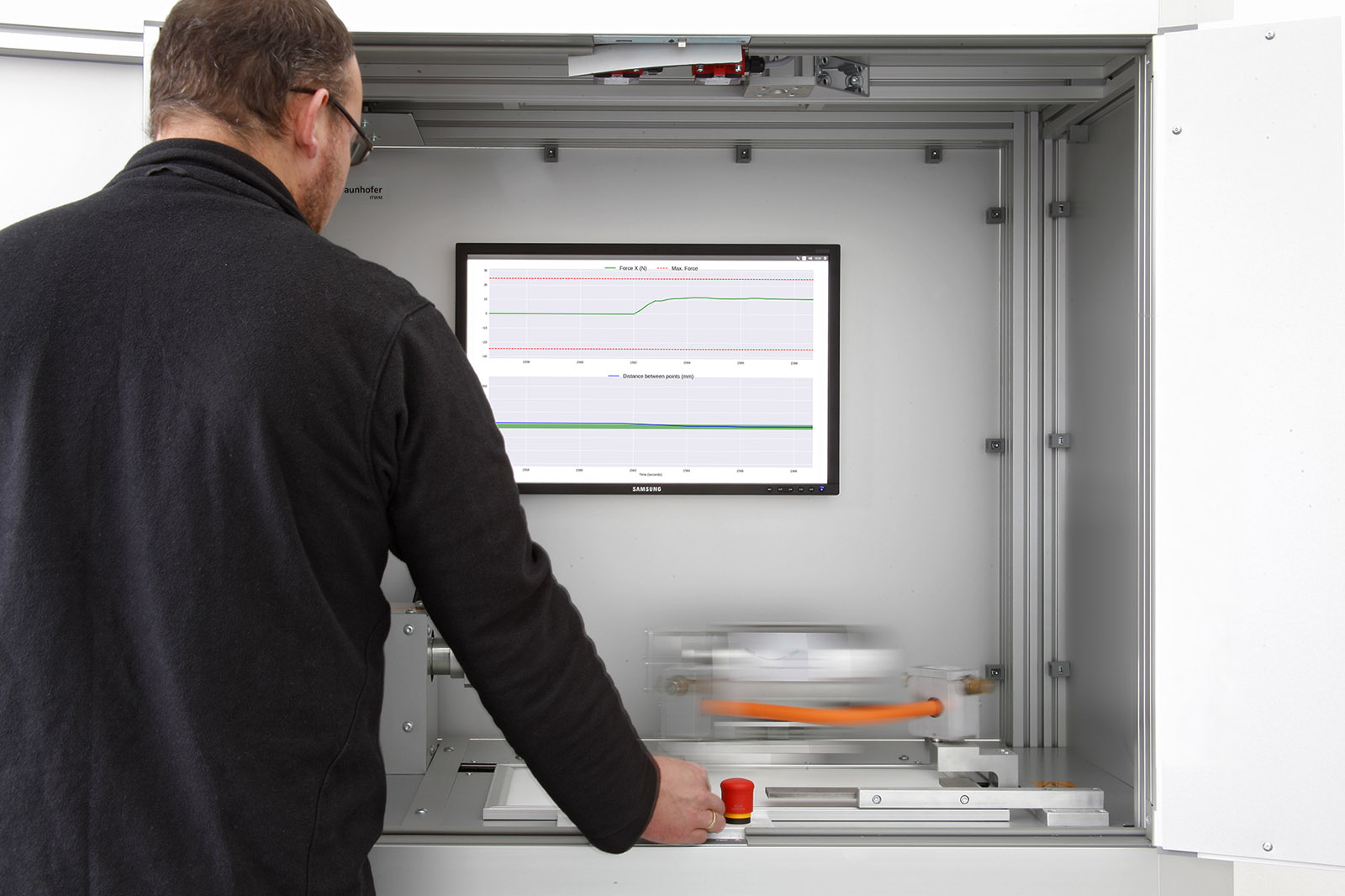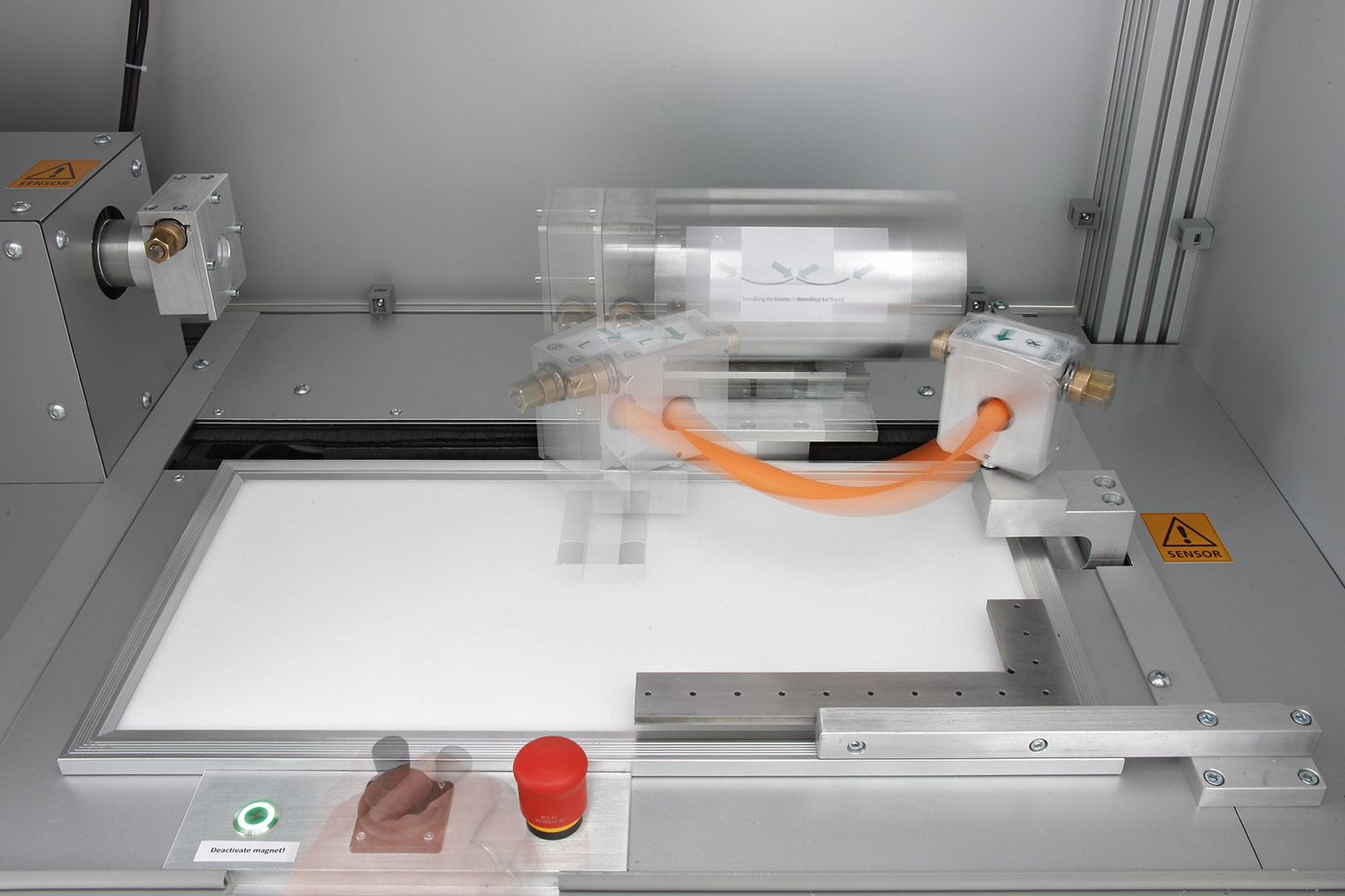Research News
Simple, rapid determination of cable properties
Trying to fit all the necessary cables into a car is anything but an easy task. Simulations can be helpful, but the properties of each cable need to be precisely defined up front. The automated MeSOMICS measurement system enables carmakers, for the first time, to define these parameters simply and rapidly, without having to call on outside experts: a solution that saves time and money.


Automotive industry: Automated cable measurement and evaluation system
Modern cars contain up to three kilometers of complex wiring, needed to supply power and data to various motors and sensors, onboard computers, parking assistance systems, headlamps, and so on. It’s no easy task to fit so many cables into a limited space without tangling them up or bending them over sharp edges where they could be damaged by abrasion. It’s an important issue because damaged cables can cause components to fail, possibly endangering the safety of the vehicle’s occupants or even resulting in costly, image-tarnishing vehicle recall campaigns.
That is why many car manufacturers rely on the IPS Cable Simulation software developed jointly by the Fraunhofer Institute for Industrial Mathematics ITWM and the Fraunhofer-Chalmers Research Center FCC. They can use it to simulate the best way to lay cables in a vehicle, in real time. But even the best simulation can only produce useful results if the physical parameters input as the basis for calculation are realistic. In the case of cables, these parameters are bending, torsion and tension stiffness. Until now, determining these values was a time-consuming process. Samples of the cables had to be sent to a laboratory to undergo measurements using several different test systems. The subsequent step to derive the necessary stiffness parameters from the measurement data calls for additional specialized knowledge, and adds to the duration of the process.
Datasets ready in just three hours
Now customers can have the datasets they need within as little as three hours. A new, highly automated measurement system developed by researchers at Fraunhofer ITWM makes this possible. Its name, MeSOMICS, stands for Measurement System for the Optically Monitored Identification of Cable Stiffnesses. “Our solution enables customers to test cables on their own premises, which not only saves a lot of time but also money,” says Dr.-Ing. Michael Kleer, a research scientist at the Fraunhofer Institute in Kaiserslautern.
Since the tests run automatically, they can be carried out by employees without any special training. All they need to do is clamp the cable in the test apparatus and start the measurement process. Inside the machine, the cable is deformed in a specific measurement cycle, and the required forces and moments are recorded. “The measurement and evaluation process takes place entirely within the MeSOMICS machine, making it extremely easy to operate,” adds Kleer.
The result is delivered to the user in the form of a photo of the bent cable, overlaid with the theoretical curve of the bending line for the determined stiffness value. The user can therefore see at first glance whether the parameters are realistic. Moreover, the stiffness values are provided as a dataset that can be directly read into the simulation program.
Improvement on existing measurement methods
Another special feature of the machine is that it emulates the actual bending conditions of the cable during installation. In other words, the bending curvature is increased to match the reality of vehicle applications. Previous systems were unable to do this. In standard 3-point bending tests, the test sample is supported at each end and bent by applying gentle pressure at the central point. This type of test works well for rigid components, but is less appropriate for cables. “We adapted the test setup to allow for much higher bending deformations, allowing the measurement of cables and hoses in a more realistic way,” reports Kleer.
The MeSOMICS system is already commercially available as a scalable solution that can be adapted to each customer’s needs. The researchers intend to add new features in the coming years. One of their current projects involves connecting the measurement system to a controlled-environment chamber, so that tests can be conducted at different ambient temperatures and humidity levels. This will provide additional data to enhance the results of the test and simulation processes.